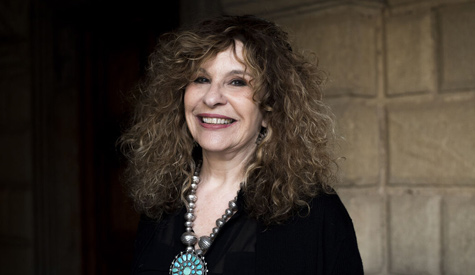
A powerful dream lead has been revealed about the early years of Belli’s life. Only one thing is certain: by the year 1970, her poems were appearing in several Latin American publications: El Gallo Ilustrado, La Prensa Literaria, and Nicaracuac, among others. No one doubted then the vibrant strength of her voice, and this was corroborated when the prestigious Marino Fiallos Gil Prize for Poetry of the Universidad Autonoma of Nicaragua was awarded to her in 1972 for Sobre la Grama, her first book.
In February 1974 the veteran Nicaraguan poet Jose Coronel Urtecho recognized Belli’s talent in an essay, “Entrada a la poesia de G.B.”, which served as a prologue to Sobre la Grama, beginning thus: “In my opinion, Belli has assured herself a place in Spanish-language poetry” Two U.S. professors, Miriam Ellis of the University of California (Santa Cruz) and Elisa Davila of SUNY (New Paltz) believe that “despite the preponderance of love poems in Sobre la Grama, Belli does not wallow in sentimentality but rather imbuses her lyrical statements with a strong sense of self. The pieces of her young daughters (Margam and Melissa) are exceptionally tender, documenting their births and early years and her sense of joy and fulfillment, as well as the realistic demands of motherhood. She exults in being a woman: “Y Dios me hizo mujer” (an opening poem in the book), the leading piece in the anthology, which letter with “Tengo”, a shorter work, constitutes an extraordinary statement about the female condition.”
In a “PostScript” to the second edition (1983) of Sobre la Grama (originally published in 1974), Coronel Urtecho declared that the outstanding event (“el acontecimiento de la capital”) in Nicaragua’s history had occurred: La Revolucion Popular Sandinista, and that Gioconda Belli’s book of poems was a sort of harbinger of the revolution.”Belli herself and her poetry, are not two but one, already part of the quintessence of the revolution.
Her unique poetry is certainly one of the most beautiful and natural voices of the Nicaraguan revolution and of course, of the Nicaraguan women’s revolution, which is not two revolutions but only one revolution. Reading Belli once more, as I usually so do, I feel like comparing her on a level, not only with the best contemporary poets but also with all the great women poets that have existed since Sappho. For her second collection of poems Linea de Fuego, 1978 (Line of Fire), Belli won the prestigious Casa de las Americas Prize.
Linea de fuego has 55 poems, reflecting revolutionary fervor as well as frank expressions of sexual desire and fulfillment, and eight prose poems. As a critic describes this volume, “The most incisive pieces deal with new roles for revolutionary women, as well as the traditional ones in new guises which they must play. An admixture of real and surreal, powerful imagery, inventive metaphor, and true poetic vision create incisive statements.” In essence, those are Belli’s characteristics features to be found again in Truenos Y arco iris (1982) primarily a compilation of pieces previously prohibited, and in the powerful Amor Insurrecto (1984).
Some specimens of these are to be found in English versions in Nicaragua in Reconstruction and at War, The People Speak, A Collage of Chronology, Analysis, Poetry, etc. Portraying Insurrection, Reconstruction, Culture, Revolution, and United States Intervention, Marc Zimmerman did the editing and translation. In 1987 she published De la Costilla de Eva. It was translated and published as From Eve’s Rib in 1989.
Spanish American Authors.
The Twentieth Century. Angel Flores